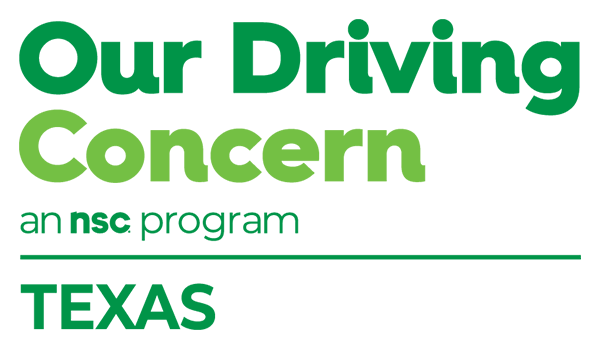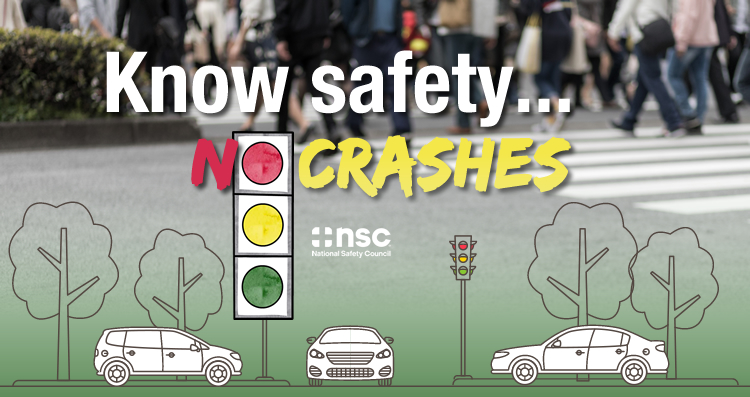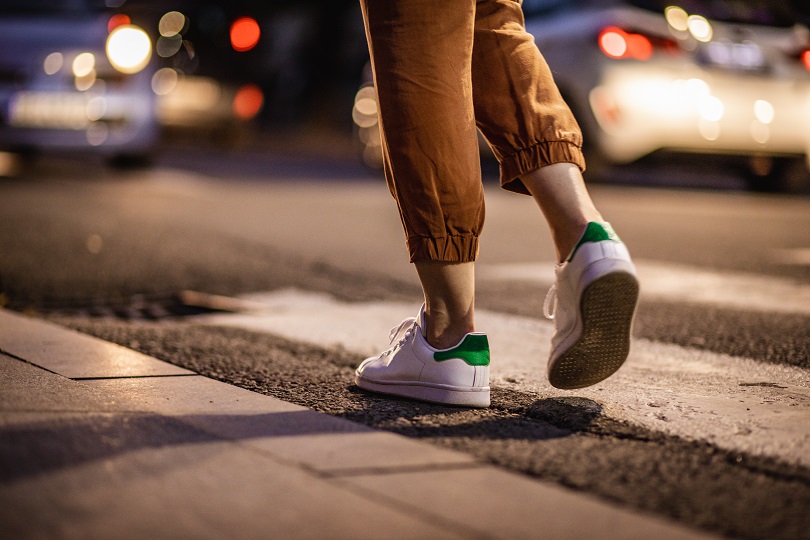This time of year we get used to changes and anticipate certain things. The sun is rising later and setting earlier. Daylight hours are decreasing – a telltale sign of the change of seasons. And you know what that means, right? People are up and around more during hours of darkness than at other times of the year.
When it’s dark, many experience difficulty with vision, including those who are near-sighted or have cataracts. Vision also can be impacted by nutritional deficiencies and medications. When it comes to transportation safety, you need to see and be seen, whether you’re driving, walking or riding a bicycle.
You can be startled easily if you can’t see around a dark corner while walking at night. Walkers who practice safety precautions at night know the value of an ounce of prevention and recognize traffic crash incidents involving pedestrians are on the rise. This much we know:
- Most pedestrian traffic crash incidents occur on local roads, after dark and outside of intersections
- Nearly half of pedestrian fatality incidents involve alcohol impairment by the driver and/or the pedestrian
Here are two simple steps you can take to help protect your workers: 1. Offer incentives for everyone at your location to undergo an annual physical and eye exam; 2. Provide education and training in conjunction with your next walking challenge event.
You’ll want to share these tips to keep pedestrian safety at the forefront year-round:
- Walk on sidewalks
- Put the phone in your pocket and be alert at all times
- Wear bright colored clothing during the day and reflective materials at night
- Cross streets in crosswalks and well-lit areas
- Be cautious in parking lots and near street corners; drivers might not expect you to be there and might not see you
Prioritize sharing the road by challenging your workers to rethink their driving behaviors. Did you know that speeding, drunk and drugged driving and distracted driving were factors that contributed to an 8.5% increase in pedestrian fatalities in Texas last year, according to data from the Texas Department of Transportation?
Seek volunteers to lead safety talks as a way to kick off team meetings. Arm them with these free resources:
- All of us are pedestrians at some point in the day
- Learn the three types of distraction behind the wheel
- Speeding increases the severity of injuries in a crash
Pedestrian safety is something that can be learned at work and carried home. Why is that important? Let me share a story involving a colleague. When he was a boy, he ran into traffic and was hit by a car. He was treated for a possible concussion and required to stay overnight at the hospital for observation. Thankfully, he was not injured seriously.
This incident occurred during broad daylight, not far from a school. What if it had been dark and the driver had not been paying such close attention to his surroundings? The outcome could have been much different.
Could the boy and the driver have benefitted from a safety reminder? Couldn’t we all? Remember, employers absorb the brunt of crash costs, whether they occur on or off the job and whether they involve an employee or family member.
To cut costs and protect pedestrians, some communities have adopted new safety strategies. They’re adjusting traffic controls and lowering speed limits in high-density areas and/or during nighttime hours. They’re also making use of flashing lights to alert drivers of pedestrian activity. Engineering approaches to separate cars from pedestrians are more common nowadays, too.
Until these types of solutions become universal, pedestrian safety remains a two-way street and requires everyone to share the road responsibly.
– Cindy Leonard is a senior program manager with the National Safety Council



